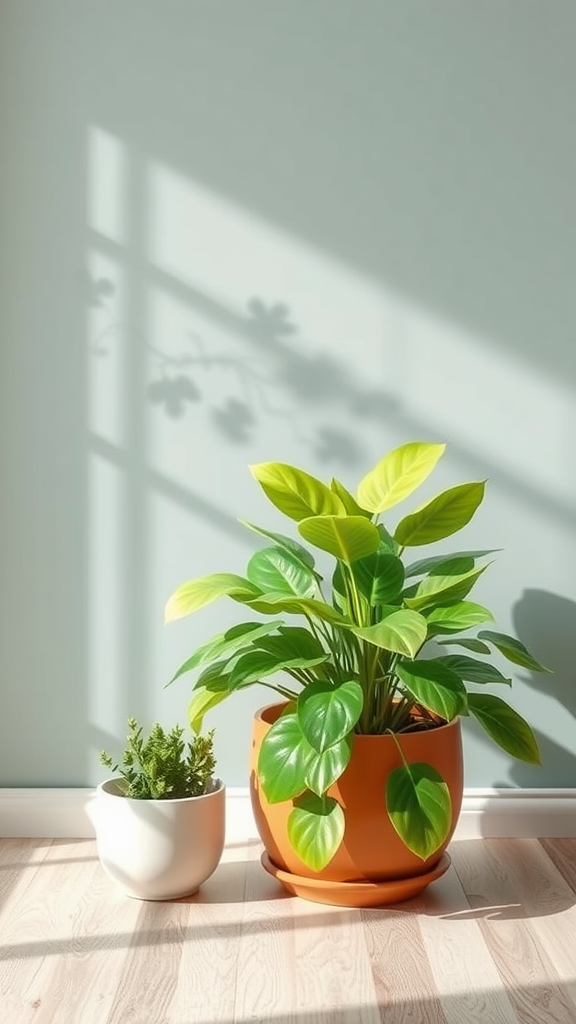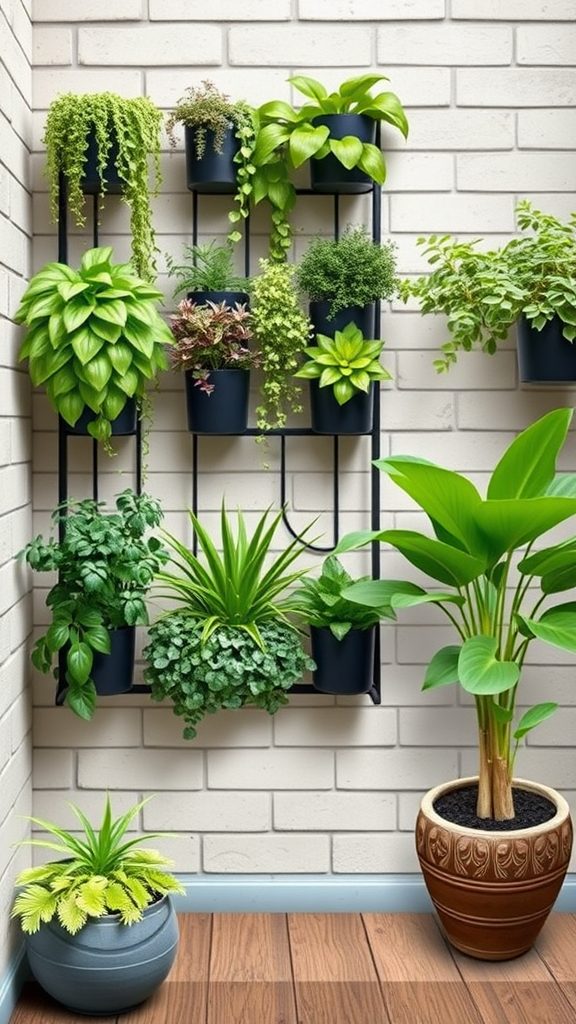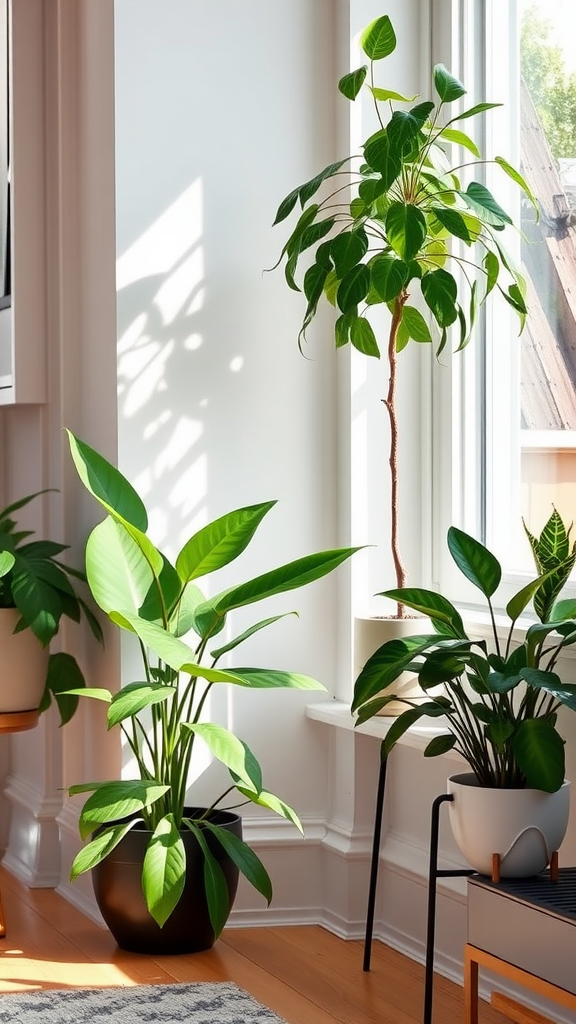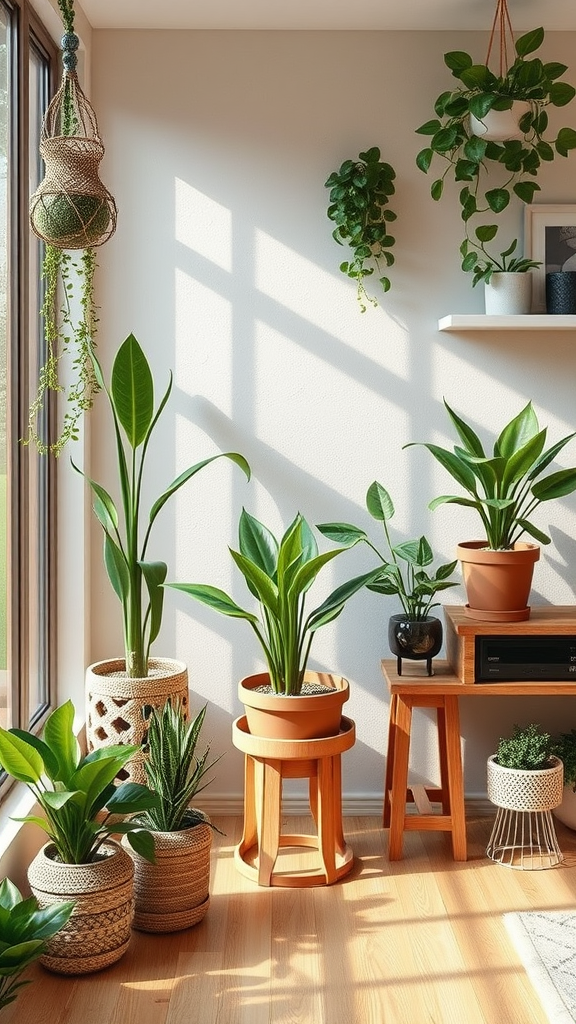Best Plants for Air Purification: Top Choices for a Healthier Home
Transforming your home into a sanctuary infused with fresh air doesn’t require high-tech air purifiers. Instead, you can harness the natural air-purifying abilities of specific plants. Indoor plants not only beautify your space, but they also play a significant role in cleaning the air you breathe, making it easier on your lungs and overall health. Below are some of the best plants for air purification that can enhance your living environment.
Spider Plant
The spider plant is a popular choice for many households. It’s an easy-to-care-for plant that thrives in various conditions. Spider plants can filter out pollutants such as formaldehyde and xylene. They prefer indirect sunlight and can tolerate neglect, making them perfect for beginners.
Peace Lily
Known for its beautiful white blooms, the peace lily is more than just a pretty face. It effectively removes harmful toxins like ammonia, benzene, and formaldehyde from the air. This plant prefers shaded environments and requires only weekly watering. However, be cautious; peace lilies are mildly toxic to pets, so keep them out of reach.
Boston Fern
Boston ferns bring a lush, tropical feel into your home while providing excellent air purification. They are particularly good at removing formaldehyde from the environment. They thrive in humid conditions, so make sure to mist the leaves regularly if your home lacks humidity. These ferns look stunning in hanging baskets or on top of shelves.
Aloe Vera
Aloe Vera is well-known for its medicinal properties, but it also serves as a natural air purifier. This succulent can help remove pollutants like formaldehyde and benzene. Aloe Vera thrives in bright, indirect sunlight and requires minimal watering, making it a perfect plant for busy individuals. Plus, if you have minor burns or cuts, you can use its gel for soothing relief!
Rubber Plant
The rubber plant is a robust indoor plant, known for its glossy leaves and ability to filter toxins effectively. It can remove airborne chemicals like formaldehyde and is particularly useful in larger rooms due to its size and greenery. The rubber plant prefers bright, indirect light and requires moderate watering. As it grows, it can even improve humidity levels in your home.
Snake Plant
With its striking sword-like leaves, the snake plant is both beautiful and effective at purifying the air. It converts carbon dioxide into oxygen, even at night, which makes it unique among indoor plants. Additionally, the snake plant filters out toxins such as formaldehyde and benzene. This plant is virtually indestructible, adapting well to low light and drought conditions, making it an ideal choice for beginners.
Dracaena
Dracaena comes in multiple varieties that can suit any décor. This plant can filter several toxins, including trichloroethylene and formaldehyde. Dracaenas flourish in indirect sunlight and only need occasional watering, making them low-maintenance. However, be aware that they can be toxic to pets, so consideration for their placement is essential.
Pothos
Pothos, often called devil’s ivy, is an incredibly forgiving houseplant that thrives in various light conditions. It does an excellent job of removing indoor air pollutants like formaldehyde, xylene, and benzene. Pothos prefers to dry out between waterings, making it ideal for people who sometimes forget to tend their plants. Plus, its trailing vines make for a stunning visual feature in any room.
How to Incorporate These Plants into Your Home
To maximize the air-purifying effects of these plants, consider placing several of them in your home. Here are some tips:
- Mix and match different plants to create a green corner in your living room or office.
- Utilize shelf space and hanging pots to showcase trailing plants like pothos.
- Place air-purifying plants in rooms where you spend the most time, like the bedroom or living area.
Bringing plants into your home not only enhances your décor but also actively contributes to a healthier living environment. Choose any of these best plants for air purification to breathe easier and enjoy the benefits they bring!
A few of these plants into your home can lead to noticeable improvements in air quality. They are not only effective but also offer a beautiful way to connect with nature indoors.
The Science Behind Indoor Air Quality and Plant Benefits
Indoor air quality is a crucial aspect of our health and well-being, often overlooked in our everyday lives. Many of us spend a significant portion of our time indoors, whether at home, work, or elsewhere. Unfortunately, the air within these spaces can be filled with pollutants that affect our health. Understanding the science behind indoor air quality can help you choose the best plants for air purification, ultimately allowing you to breathe easier.
One of the main contributors to indoor air pollution is the presence of volatile organic compounds (VOCs). These are chemicals emitted by everyday products such as paints, cleaning agents, and even furniture. Prolonged exposure to VOCs can lead to a range of health issues, including headaches, respiratory problems, and even long-term effects like liver damage. The good news is that certain plants can assist in reducing these harmful compounds in the air.
The science of how plants purify the air involves a process called phytoremediation. Through this natural process, plants absorb pollutants through their leaves and roots, breaking them down and using them for growth. This unique ability is why many indoor plants are cherished for their air-purifying properties.
Several scientific studies have highlighted the impact of houseplants on improving indoor air quality. The most notable is a study conducted by NASA, which identified specific plants that are particularly effective at removing toxins from the air. Here are some of the best plants known for air purification:
- Spider Plant: This hardy plant is excellent at removing formaldehyde and other toxins. It’s also easy to care for, making it perfect for beginners.
- Peace Lily: Known for its beautiful white flowers, this plant is effective at filtering out ammonia, benzene, and VOCs. It thrives in low light conditions.
- Aloe Vera: In addition to its medicinal properties, Aloe Vera helps reduce formaldehyde and is known for its ability to improve humidity levels in a space.
- Boston Fern: This lush plant excels at removing formaldehyde from the air and adding moisture, making it ideal in drier environments.
- Rubber Plant: A favorite among indoor gardeners, this plant is effective in eliminating toxic substances and thrives in various lighting conditions.
These plants into your indoor spaces can enhance your air quality significantly. When planning your plant placement, consider the following tips to maximize their air-purifying benefits:
- Choose the Right Location: Place your plants where they can receive adequate sunlight and air circulation. Having them near windows or light sources helps them thrive.
- Group Plants Together: Grouping several plants together enhances their air-purifying effects due to increased transpiration. This process helps to increase humidity and reduce airborne pollutants.
- Regular Maintenance: Keep your plants healthy by regularly watering and dusting their leaves. Healthy plants are more effective at filtering air.
Beyond air purification, bringing plants into your living or work environment offers psychological benefits as well. Studies have shown that having greenery nearby can reduce stress, enhance creativity, and boost overall mood. This interaction with nature can lead to improved mental well-being, which complements the physical health benefits of cleaner air.
It’s also essential to consider the type of plants you choose. While many are great for air purification, some are toxic to pets. If you have furry friends at home, make sure to select non-toxic plants that will not harm them. For example, while Peace Lilies are effective at purifying the air, they are toxic to cats and dogs. Always research before adding new plants to ensure a safe environment for all members of your household.
Understanding the science behind indoor air quality reveals the important role plants can play in creating a healthier living environment. By selecting the right plants and maintaining them correctly, you can enjoy cleaner air and the numerous benefits of having a touch of greenery. Not only will you breathe easier, but you’ll also enhance your space’s aesthetic and overall atmosphere.
Conclusion
Bringing plants into your home is more than just a decorative choice; it’s a powerful step toward creating a healthier living environment. The best plants for air purification, like the Spider Plant, Peace Lily, and Snake Plant, not only enhance your space visually but also significantly improve indoor air quality. These plants filter out harmful toxins, while adding humidity to the air, which can help alleviate respiratory issues and reduce stress.
Understanding the science behind indoor air quality reveals why incorporating these plants is essential for your well-being. Studies indicate that indoor air can be up to five times more polluted than outdoor air. By strategically placing air-purifying plants around your home, you can combat pollution and breathe easier. They absorb carbon dioxide and release oxygen through photosynthesis, contributing to a fresher, more invigorating atmosphere.
As you explore your options, consider your lifestyle and the specific conditions in your home to select plants that suit your needs. Not only will you enjoy the beauty they bring to your space, but you will also nurture a healthier environment for you and your family. With a little care, these plants can thrive and continue to purify your air for years to come. Embrace the benefits of nature indoors, and take a proactive step toward a cleaner home—your lungs will thank you!





